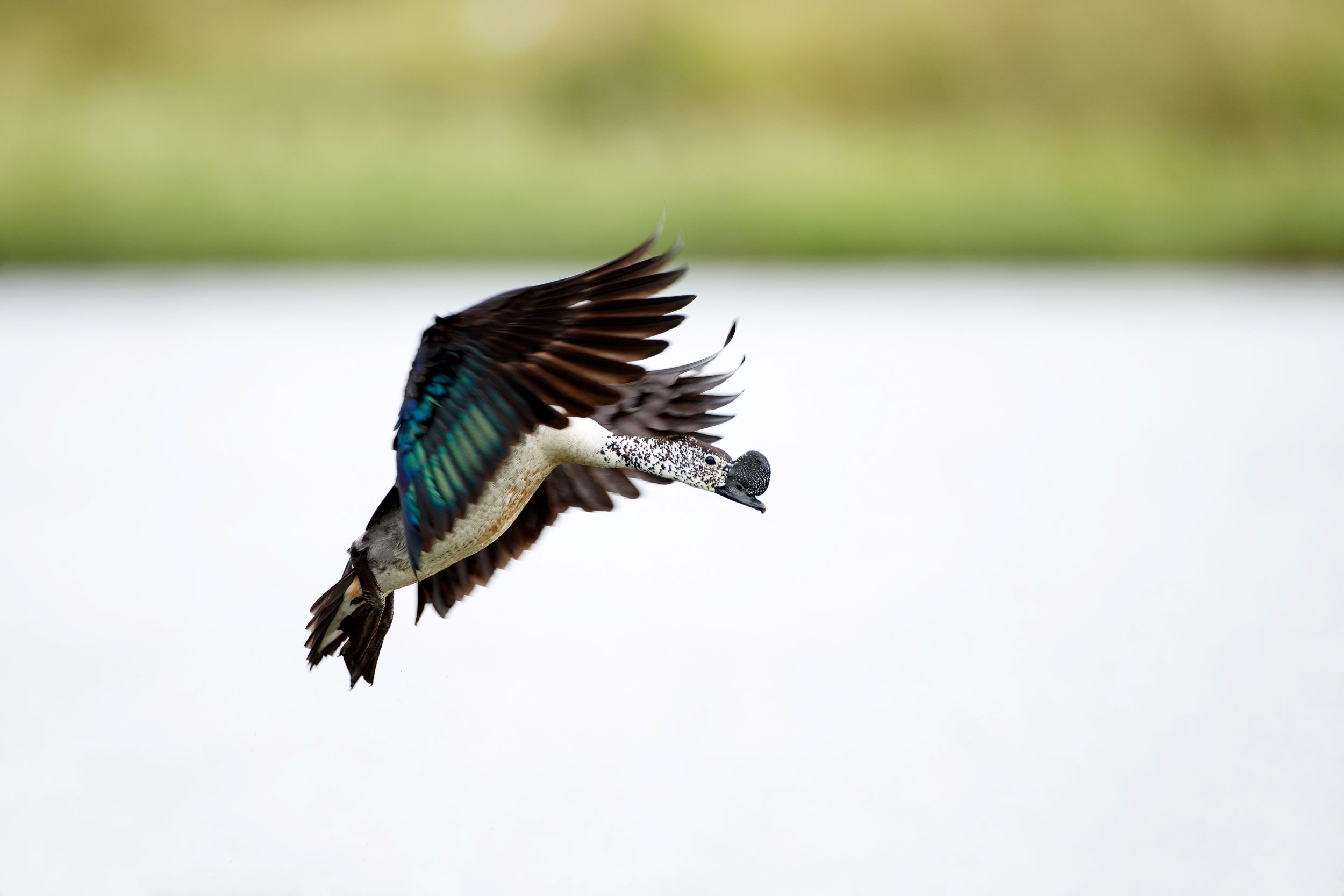
The American Comb Duck (Not found in Utah)
Sarkidiornis sylvicola, commonly referred to as the Comb Duck, is a fascinating species of waterfowl known for its distinctive characteristics and behaviors. Found primarily in the tropical regions of South America, the Comb Duck is especially recognized for its notable physical feature – the large, fleshy comb on the male's bill, which is smaller and less prominent in females. This unique comb, combined with their sizeable body and striking plumage, makes them easily distinguishable. The males typically exhibit a glossy black and white coloration, while females tend to have more muted, mottled brown and white plumage, reflecting a significant degree of sexual dimorphism in the species.
The habitat preferences of Sarkidiornis sylvicola are closely linked to wetland environments. These ducks are typically found in and around freshwater lakes, swamps, and large rivers, where they have ample access to water resources essential for feeding, breeding, and nesting. An intriguing aspect of their behavior is their propensity to nest in trees, a characteristic uncommon in many duck species. Comb Ducks use their strong, clawed feet to perch and maneuver in arboreal settings, often choosing tree cavities or dense branches for nesting sites.
The diet of the Comb Duck is varied and omnivorous, encompassing a mix of aquatic plants, seeds, and small animals such as insects, snails, and fish. This varied diet is reflective of their adaptability to different environmental conditions and their role in the ecosystem. In their wetland habitats, Comb Ducks contribute to ecological balance by controlling populations of aquatic invertebrates and aiding in the dispersion of plant seeds, thus playing a vital role in their ecosystems.
Socially, Comb Ducks exhibit interesting dynamics. Outside the breeding season, they are not particularly gregarious, often seen in small groups or pairs. However, during the breeding season, males become more territorial and engage in more pronounced social and display behaviors. These behaviors include a range of vocalizations and physical displays, such as flapping wings and showcasing their combs, aimed at attracting females. The nesting process is primarily the female's responsibility, with nests typically built in tree cavities, reflecting their arboreal preferences.
Conservation concerns for Sarkidiornis sylvicola center around habitat loss and degradation. As wetland dwellers, they are particularly susceptible to the impacts of wetland drainage, pollution, and deforestation, which threaten their nesting and feeding grounds. In some areas, they are also subject to hunting pressures. Conservation measures for the Comb Duck involve protecting and restoring vital wetland habitats, alongside broader ecological efforts to maintain healthy freshwater ecosystems. This species serves as an important indicator of the health of these ecosystems, and their protection benefits not only the Comb Ducks but also a myriad of other species that share these habitats. The preservation of Sarkidiornis sylvicola and their environment is crucial for maintaining the biodiversity and ecological integrity of tropical wetland regions.